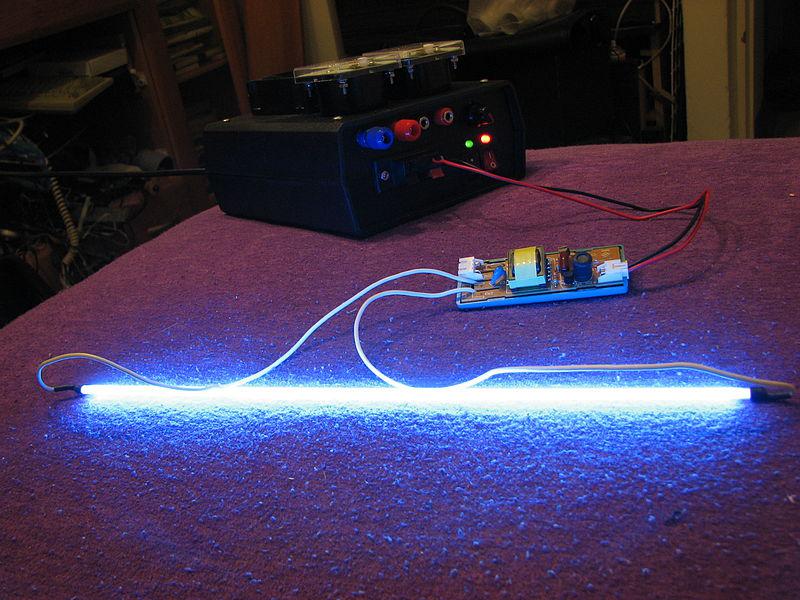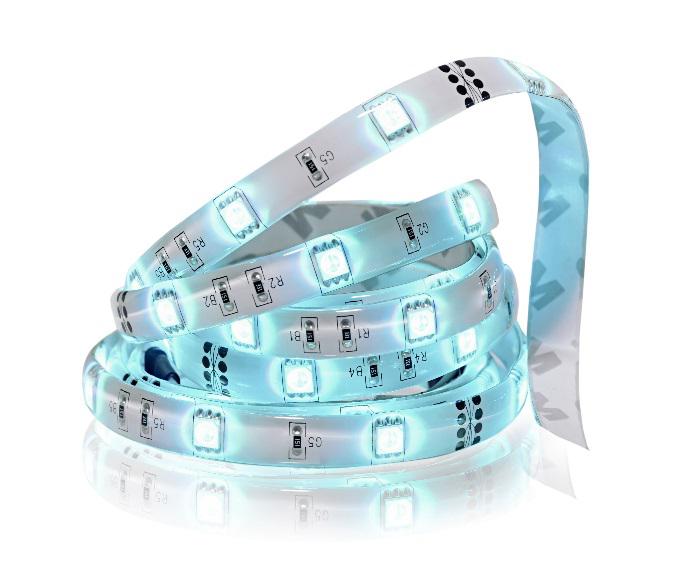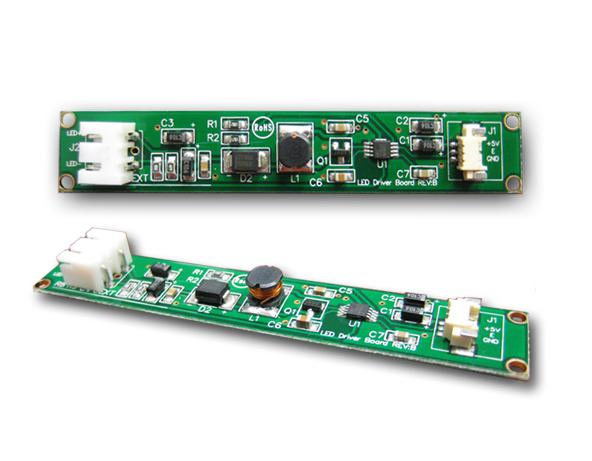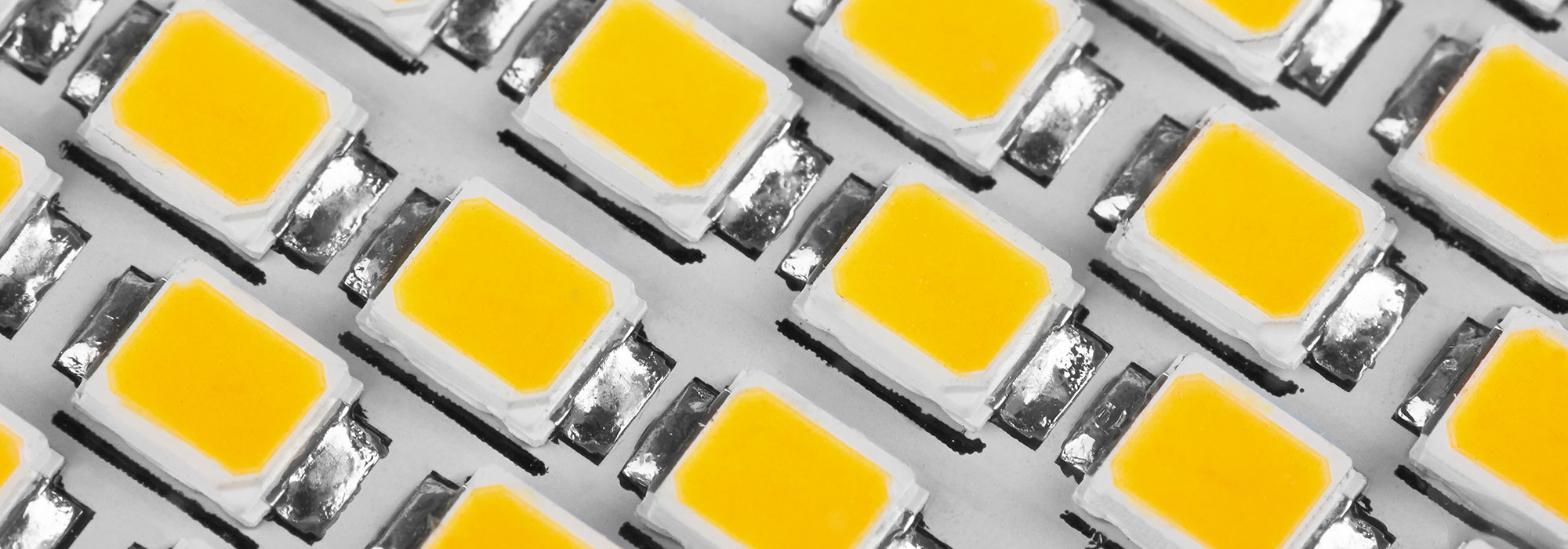High Bright Integration Services
If you are looking for a bright display, high quality LED technology matters. LED rails are easy to purchase and integrate. However, without expert design configuration, you risk losing contrast quality and increasing internal reflection, resulting in a less readable display. AGDisplays provides high bright LED backlight display solutions that are customized to your panel requirements, with design options and flexible brightness customization. Our dependable component selections make the LED backlights and controllers offered by AGDisplays some of the most reliable in the industry. AGDisplays has over 40 years of collaborative LCD experience. Our design team works closely with your technical specifications in order to add efficient high bright LEDs to your LCD without compromising quality and readability. Innovative LED technology has opened up new opportunities with dynamic color mixing and color sequencing capabilities. These capacities coupled with their small size and system flexibility make them ideal for any industry.
Integrating an LED backlight typically requires heat management. It is necessary to dissipate operating heat as efficiently as possible, keeping sensitive LED components safe from thermal damage created by dissipation of current. Inefficient heat management can damage or shorten the life of an LED backlight. AGDisplays integrates high efficient heat management technology to preserve the lifespan of your LED;and we continually inspect the value and quality of our integration workmanship to ensure we are providing a safe installation.
If your panel still has CCFL bulbs, consider upgrading to LED technology. Soon, CCFL bulbs will be unavailable for replacement, in the case that one of your lights breaks. LEDs stand up to damage better and provide a longer lifespan with higher brightness levels. CCFL (or CFL) lamps are long fluorescent tubes and their fragility leaves them vulnerable to breakage.

By Gophi [GFDL (http://www.gnu.org/copyleft/fdl.html) or CC BY-SA 3.0 (https://creativecommons.org/licenses/by-sa/3.0)], from Wikimedia Commons

By Dalia Svander [CC BY-SA 3.0 (https://creativecommons.org/licenses/by-sa/3.0) or GFDL (http://www.gnu.org/copyleft/fdl.html)], from Wikimedia Commons
LED displays are considered high bright once luminance measures 1000 nits and above. High bright LEDs are often used in outdoor applications because of the increased readability in ambient lighting as well as their ability to withstand severe temperature extremes. Natural sunlight luminance will reach into the thousands (nits), so it is recommended that any outdoor displays install high bright LEDs.
AGDisplays is considered a pioneer in high bright LED technology. We carry our own line of High Bright LED rails that we continue to advance as the industry changes. AGDisplays also offers custom-sized LED backlight solutions that we design and tailor to custom-fit your exact needs. Protect your panel against environmental factors by upgrading your LED lighting.
- Shock and vibration—improved ruggedization
- Extended lifespan:10,000-100,000 hours
- LEDs are much more durable in harsh temperatures (-40 to 85°C);extreme hot and frigid cold
- Protection against extreme humidity
- Save money:lower power consumption, with higher brightness output
- Environmentally safe:LEDs are ROHS-compliant;they are mercury- and lead- free and reduced EMI emissions
- Energy efficient and dependable
- Smaller LEDs for a slim and light design, and increased ruggedization
- Custom-manufactured LED controllers
- Multiple designs to accommodate your specific needs
- High sunlight readability
- NVIS-compatible options
- High color gamut achievable
- Lower EMI and better resistance
- Lower heat emission
- Retrofitted into any sized LCD
- Better uniformity
LED Backlighting Design Solutions
LED backlighting is typically designed as edge-lit or in a direct backlighting arrangement. Both types have the LEDs concentrated into a diffuser source (light guide of the display) distributing the light uniformly throughout the viewing area. With an edge-lit backlight design, LEDs are aligned along edge of the internal light guide of the LCD. The backlight array may be mounted on one, two, or all four edges, depending on the size of the display and the amount of luminance required. With this design, light from the LEDs is captured and spread across the viewing display by way of the light guide. Benefits of this design include a slimmer profile of the product and a lower cost of LEDs.
In a direct backlighting arrangement, LEDs are placed in a flat array behind the light guide and the diffuser plate. Direct backlighting works as a uniform source of backlighting, like most CCFL LCDs. One of the pros of integrating a direct backlight arrangement allows for local-dimming aspect, which means the display is able to dim zones behind the dark areas of the screen in fairly specific areas to make the image really pop, drastically increasing the apparent contrast ratio providing a more accurate color adjustment and enhancing overall viewing quality. Blacks are true black and grays are more defined.

Brightness
The rule of thumb is that an LCD is considered high bright if the screen brightness (or luminance) measures higher than 1000 nits. The unit measuring the amount of light coming from a display is a ‘nit,’ also known as candelas per meter square (cd/m²).For reference, generally desktop monitors and laptops measure at 200 to 400 nits. Desktop monitors and laptops are usually used indoors, and therefore the brightness amount is not suitable for outdoor use. These screens are not readable outside in direct or indirect sunlight. The screens look dull and washed out. Most of the time, an LCD is rated at its maximum brightness level. On a specification sheet you may see it written as brightness/luminance level at 400 nits (typ). This means the LCD’s brightness is typically maximized at 400 nits.
LED backlights are powered by LED driver boards, or LED controllers. Some LED controllershave the ability to adjust the brightness of the LED backlighting system. This may be necessary if the LCD display is being used in various light settings, such as both indoor and outdoor, during the day and the evening. It is also necessary for user preference—some users prefer lower light for close up use, and brighter light for presentation purposes. There are two types of dimming capabilities: PWM (pulse width modulation) and analog. PWM varies the duty cycle of the backlight “on time” while analog uses a simple variable voltage for brightness adjustment. Different LED controllers will have specific ranges in which the user is able to adjust the brightness. There are drivers available with full range dimming ability, allowing brightness dimming from full off to full on. LED backlight lifespan can be extended by running LEDs on a lower setting when higher brightness is not necessary.
AGDisplays offers controllers that are designed to seamlessly integrate with your unique panel specifications or virtually any OEM LCD panels. Our unique LED controllers accommodate advancing technology.
- High output, lower power consumption
- Wide adjustable input range, 12-24 volts
- Constant current
- DC to DC power inverter
- Error loop filter
- Pulse width modulation dimmer control
- For high bright LEDs, stock LEDs or NVIS dual mode LCDs

Recommended Brightness Levels Per Lighting Condition
| Lighting Condition | Ambient Brightness | Recommended LCD Brightness |
|---|---|---|
| Dark Environment | 0 nits | 50 nits |
| Indoor-No Lighting | <500 nits | 200 nits |
| Indoor Lighting | <1000 nits | 300 nits |
| Bright Shop Lighting;Overcast Skies | 1000-3000 nits | 300-500 nits |
| High Overcast, Indirect Sunlight | 3000-7000 nits | 500-800 nits |
| Full Sunlight, Blue Sky | 7000-10,000 nits | 800-1000 nits |
Contrast Ratio
Contrast is the different between the brightest white and the darkest black that is produced on a display screen. This is usually written as a ratio, such as 500:1. Typically, contrast ratios range from 450:1 to 600:1. The higher the contrast ratio, the image will be higher quality and much sharper.
When you add brightness to an LCD display, the contrast or readability does not automatically improve. AGDisplays design teams fine tune our LCD builds to prevent degradation of these important characteristics.
There are two important terms when it comes to contrast ratio, native contrast ratio and dynamic contrast ratio. Native contrast ratio is the contrast the LCD can perform alone, which should not be a problem, as LCD technology is quite advanced. Dynamic contrast ratio is when the LED backlighting system is used to enhance contrast. LEDs lessen in intensity during darker scenes, and brighten during brighter scenes. This helps the quality of color and picture stay true, even when screen images are light or dark.
What’s more, some LEDs enable local dimming. There are two types of local dimming, the first is‘full array’ or ‘direct.’ In this system, the LEDs are set up so they are able to dim in small zones. The second type of local dimming involves edge-lit LED backlights, where the edge-lit LEDs are arranged along the edges of the LCD instead of directly behind it.




